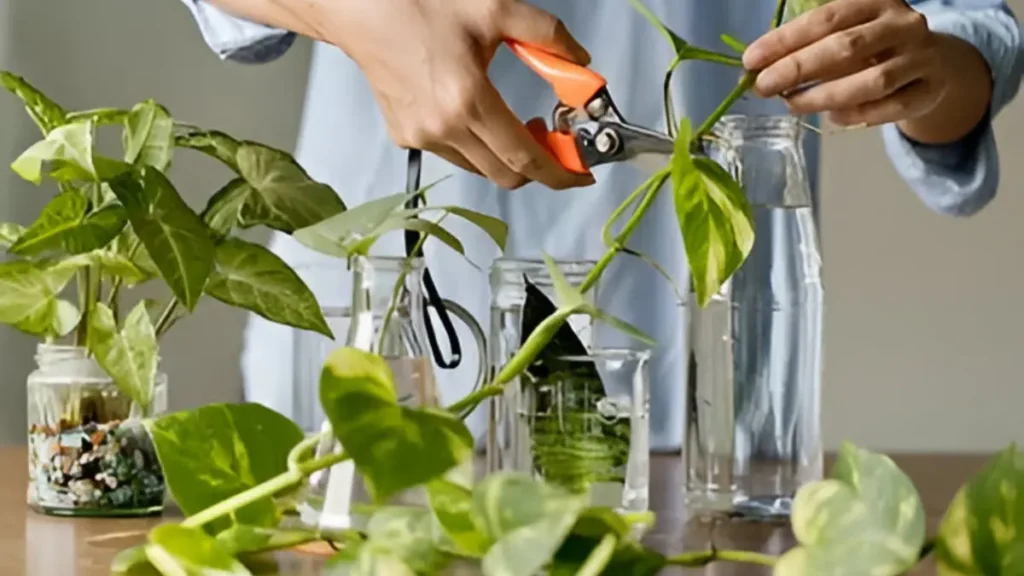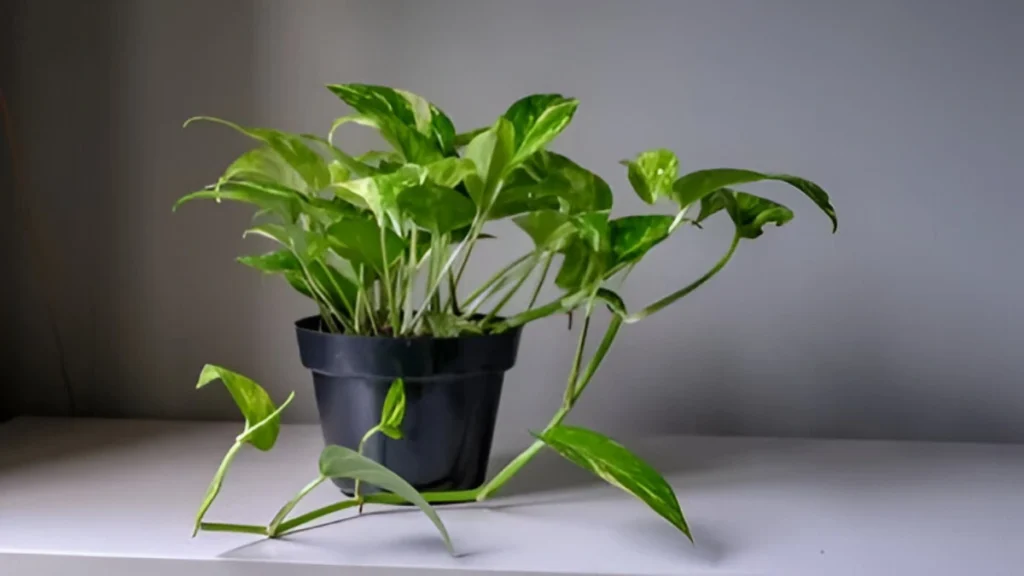Money plant, often called Devil’s Ivy or Epipremnum aureum, is more than a pretty plant. Plant aficionados often choose it because of its reputation for bringing wealth and luck. Although it requires little care in general, there are techniques to boost their growth. With its heart-shaped leaves and trailing vines, it’s a popular choice for beginners and experienced plant enthusiasts. It is a low-maintenance houseplant admired for its lush, trailing vines and heart-shaped leaves. It’s an ideal choice for beginners due to its adaptability to various light conditions and minimal watering needs.
Here are some tips to help your money plant grow faster and thrive:
- Money plants do well in partial sunlight. Avoid placing them in full sunlight since this will scorch their leaves; instead, put them in a spot where they receive brilliant, filtered light. To ensure the plant receives equal light exposure on all sides, rotate it frequently.
- When the top inch of soil appears dry, water it. A typical issue with this plant is root rot, which can be brought on by overwatering. To prevent water stagnation, make sure the pot has adequate drainage.
- To ensure efficient potting, use a balanced mix of organic materials and perlite or orchid bark for indoor plants, ensuring efficient drainage.
- এThe ideal indoor temperature range for these plants is 65–80°F (18–27°C). Keep the humidity at a reasonable level. Consider spraying the plant regularly if the air is too dry.
- During the growing season (spring and summer), fertilize your money plant monthly with a balanced liquid fertilizer. When the plant’s growth slows down in the fall and winter, fertilizer application should be reduced or stopped.
- Pinching off vine tips for bushier growth and pruning leaves to maintain plant robustness and health by removing yellowed or damaged ones.
- Money plants are elementary to multiply. To start new plants, take cuttings and root them directly in the soil or water.

- Look out for pests such as mealybugs and spider mites. Use neem oil or insecticidal soap to treat the plant if you find any infection.
- When the money plant outgrows its container, report it. It is often required every one to two years. When repotting, use a new potting mix and check the roots.
Things To Remember:
Rotting roots can result from overwatering.
Watch out for signs of excessive watering, such as money plants curling up and becoming yellow.
You can repot your money plant in a bigger container if you see that it is outgrowing its current pot. Additionally, it will give your home extra greenery.
Conclusion:
In conclusion, cultivating a money plant for quick and healthy growth requires a mix of good maintenance, ideal surroundings, and calculated strategies. Essential elements of caring for a healthy money plant are regular watering, making sure the soil drains properly, and giving it enough sunlight. When used sparingly, organic fertilizers can help it grow even more. By using these many techniques, one may foster an atmosphere that makes the plant grow quickly and easily, transforming it into a stunning and lucrative addition to any area.
Certainly! If you’d like to learn more, please consider following our WhatsApp Channel, Facebook, Instagram, YouTube, Twitter, and Pinterest.
A frequently asked questions:
Q1: Why is it called the money plant?
A1: According to Feng Shui, this plant will bring wealth, prosperity, and good fortune to the house. Because of its rounded, coin-shaped leaves, the plant is sometimes known as the “money plant.”
Q2: Can I keep my money plant indoor?
A2: Yes, money plants thrive best in indoor environments. Simply ensure that they have appropriate lighting.
Q3: How to take care of a money plant?
A3: This plant needs bright, indirect light, moderate watering, well-draining soil, and the ability to dry out the top inch of the soil in between waterings.



